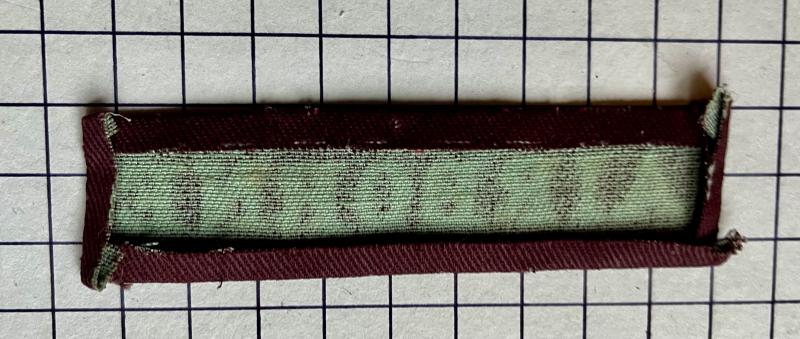cWW2 Airborne Forces Printed Cloth 'Strip' Shoulder Title Arm Badge
WWII wartime printed 'Airborne'. Rare unissued. VGC.
The existing 11th Special Air Service Battalion was renamed the 1st Parachute Battalion and, together with the newly raised 2nd and 3rd Parachute Battalions, formed the first of the new airborne formations, the 1st Parachute Brigade, commanded by Brigadier Richard Nelson Gale, who would later command the 6th Airborne Division from 1943 to 1944. The 2nd and 3rd Parachute Battalions were formed from volunteers, between the ages of twenty-two and thirty-two, who were already serving in infantry units. Only ten men from any one unit were allowed to volunteer.
In October 1941, Brigadier Frederick Arthur Montague "Boy" Browning was promoted to major general, named the Commander Parachute and Airborne Troops, and ordered to form a headquarters to develop and train airborne forces. The next unit formed was the 1st Airlanding Brigade on 10 October 1941, by the conversion of the mountain warfare trained 31st Independent Infantry Brigade Group, commanded by Brigadier George Frederick "Hoppy" Hopkinson, later to command the division. The brigade comprised four battalions: the 1st Border Regiment, 2nd South Staffordshire Regiment, 2nd Oxford and Bucks Light Infantry, and the 1st Royal Ulster Rifles.The men who were unsuitable for airborne forces were replaced by volunteers from other units. By the end of the year Browning's command had become the HQ of 1st Airborne Division.
Browning expressed his opinion that the force must not be sacrificed in "penny packets", and urged the formation of a third brigade.17 Permission was finally granted in July 1942, and the 2nd Parachute Brigade, commanded by Brigadier Ernest Down, who would later succeed Hopkinson in command of the division, was formed. The 2nd Parachute Brigade was assigned the existing 4th Parachute Battalion, and two new battalions converted from line infantry units, the 5th (Scottish) Parachute Battalion, converted from the 7th Battalion, Queen's Own Cameron Highlanders, and the 6th (Royal Welch) Parachute Battalion, from the 10th Battalion, Royal Welch Fusiliers.
Code: 799


